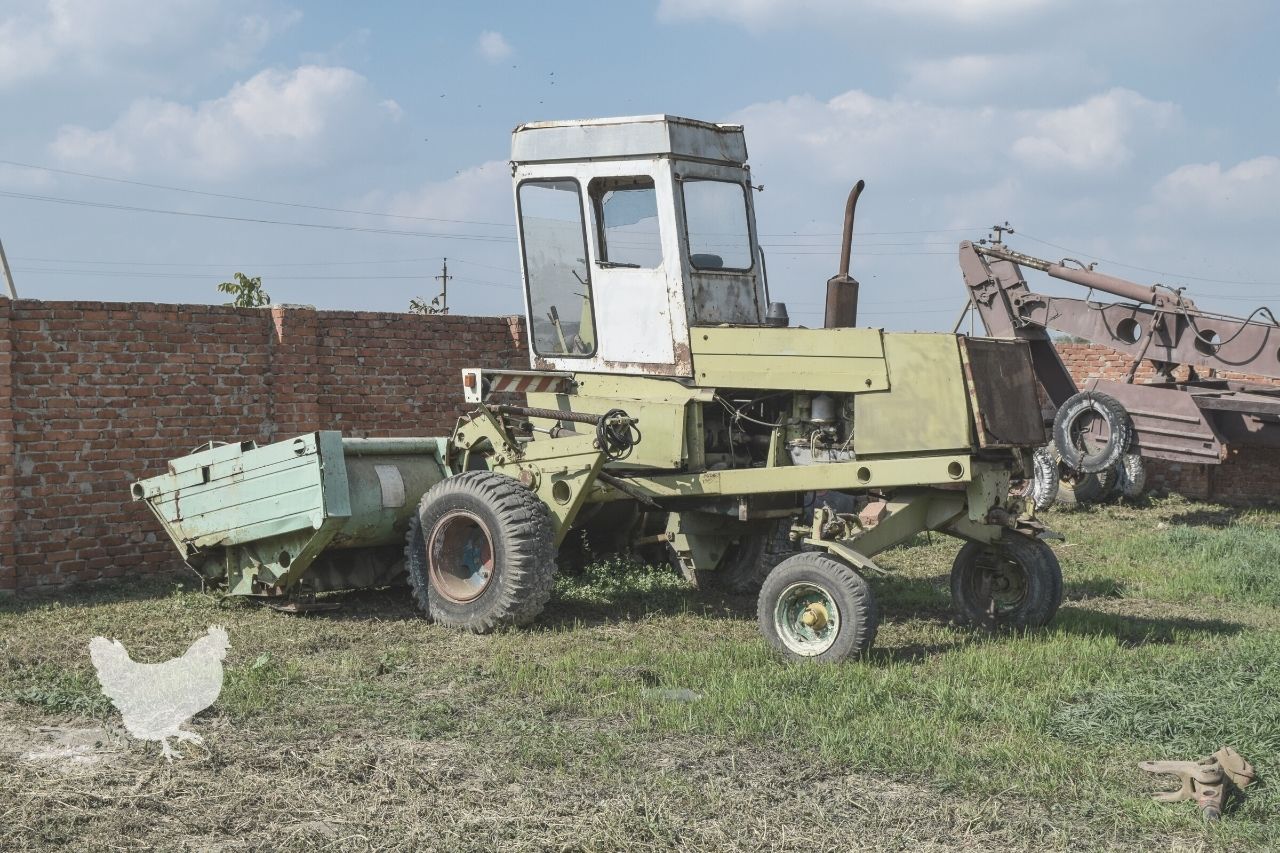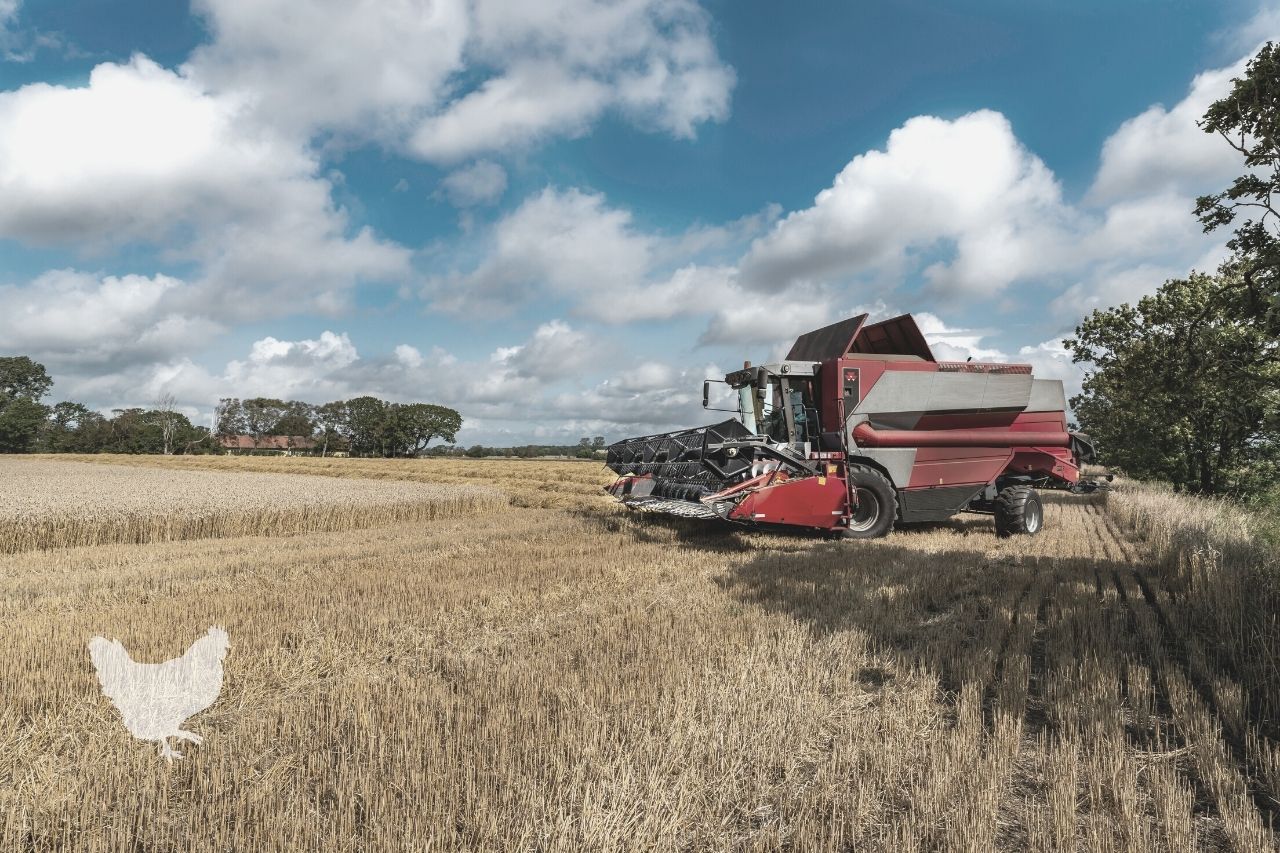When buying equipment for your farm, you’ll have to make some tough choices based on your budget, storage space, and intended use. One question that many farmers ask is how to choose between a forage harvester vs. combine harvester. Here’s what you need to know.
What You'll Learn Today
What is the Difference Between a Harvester and a Forage Harvester?

Before we dive into the advantages of a forage harvester versus a combine, here are some basic differences between the two machines.
What is a Forage Harvester Used For?
Forage harvester, also referred to as a chopper, silage harvester, or just a forager, is a machine that harvests forage plants to make silage in a process known as forage harvesting.
Forage plants might include hay, corn, or grass, with silage being these materials chopped into small pieces and compacted in a storage silo, silage bags, or a silage bunker. This chopped material is then fermented to feed livestock. You might also hear the term haylage, which is the same thing but uses grass that has dried instead of any other material.
These farm implements can be self-propelled or they can be attached to a tractor. Either way, they’ll have a flywheel with a certain number of knives or a drum (also known as a cutterhead). This chops and then propels the silage from a chute and into a wagon.
This wagon can be connected to the forage harvester or it can be a freestanding vehicle that drives alongside the machine. After the wagon is filled, it is taken back to the silo for unloading.
Smaller towed forage harvesters are often used by small family farms, but most commercial farms make silage with self-propelled forage harvesters. Many have engines producing up to 1100 HP and can cut a 35-foot wide swath of corn in just one pass. Many are hydraulically operated instead of being run by cables as is the case with older machines.
Here’s a video of a forage harvester at work to give you a better idea of how it operates:
What is a Combine Harvester Used For?
A combine harvester is similar to a forage harvester in that it efficiently harvests a variety of crops.
However, the key difference here is that they aren’t being used to produce silage. Instead, combine harvester reap, thresh, gather, and winnow crops in one single process.
They can be used for many of the crops listed above, like corn, in addition to rice, wheat, oats, barley, rye, soybeans, sorghum, flax, rapeseed, and sunflowers.
The conventional combine carried a cut crop up a feeder house with a chain and flight elevator. This material is then fed into the threshing mechanisms, which has a cylinder that rotates and moves the material to raps bars that separate the grains.
After being separated, the grain falls through a concave and into a shoe that has a sieve for further sorting.
Although many small family farms use basic combines with few bells and whistles, there are all kinds of machines you can buy for your large farm today.
Many have advanced instrumentation with features like loss monitors, shaft monitors, and even yield monitoring devices. Some are even self-driving, come with cameras, or can do field mapping to assist with navigation.
Disadvantages of a Forage Harvester
Forage harvesters can be expensive. While many farmers use them for things they aren’t necessarily intended for, like mowing and collecting hay, you’re better off to buy the piece of machinery that’s specifically made for that task (although you can always use them for other uses in addition to that, too).
It is also important to note that forage harvesters do not have internal holding tanks. It doesn’t accumulate material it cuts from the field but instead has to immediately dump the material into a wagon, tipper, or another container while it is working.
If this doesn’t happen right away, the material will be lost.
Disadvantages of a Combine Harvester
As is the case with a forage harvester, combine harvesters are quite expensive. They can also be difficult to move. A combine harvester can be difficult to transport unless you’re driving it down the road.
Plus, their size can make them difficult to maneuver on a smaller, more narrow field.
Combines are versatile machines in that they can harvest all kinds of grain crops and perform separate operations, including winnowing, reaping, and threshing all in one machine. However, if you are only producing grain for your own farm, then buying a combine harvester might not be practical because it is such an expensive machine.
This is why many farms hire out the tasks that they would ordinarily do with a combine – it’s cheaper to rent than own.
Which One Should I Choose?
Deciding which kind of machine to buy will depend on what sorts of crops you plan on harvesting.
Both a forage harvester and a combine harvester can do corn, but the finished product might look a little different.
A combine harvester will get all the corn where the forage harvester just harvests the chaff to make silage. A forage harvester is also the preferred tool for grass.
If you’re doing a lot of hay, a forage harvester might be the preferred tool here, too. You can use a forge harvester not only for making things like corn silage but also for mowing and loading grass (instead of having to use dedicated balers).
Again, a forage harvester can collect chaff as well as other types of materials – something a normal combine harvester can’t do. That said, these are expensive pieces of equipment and you should only buy them for their intended purpose because of that.
Which is Better for a Small Farm – a Used Combine or a New Forage Harvester?

When you’re trying to decide what kind of equipment to buy for your small farm, both a combine harvester and forage harvester might make your final list. Because combines can often be more expensive than forage harvesters, you might ask whether buying a used combine or a new forage harvester is more cost-effective.
There’s no clear answer to this question. Choosing the right machine shouldn’t necessarily come down to dollars and cents but instead, what kind of crop you are harvesting. Again, choose the machine that’s specified to be used for the crop you want to harvest – don’t go “off-label,” even if you’re on a budget.